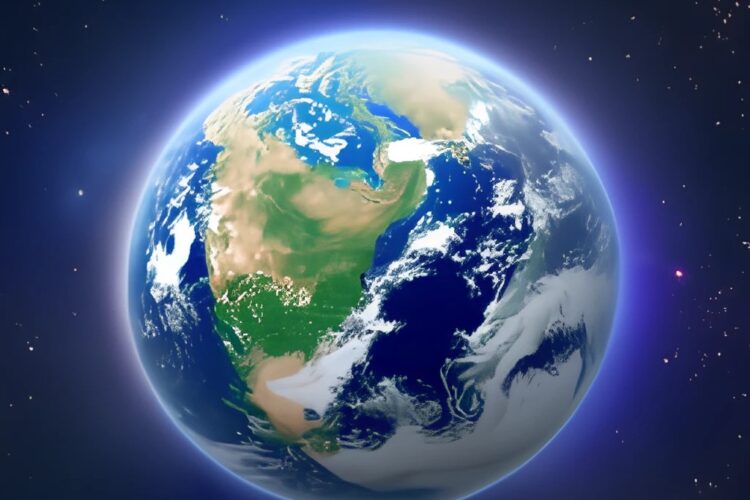Short Answer TL;DR:
The sky appears blue because sunlight is scattered in all directions by the Earth’s atmosphere, and shorter wavelengths of light (such as blue) are scattered more than longer wavelengths (such as red).
Long Answer:
The sky appears blue to the human eye because of the way sunlight interacts with the Earth’s atmosphere. The Earth’s atmosphere is made up of a mixture of gases and particles, including nitrogen, oxygen, and other elements. When sunlight enters the Earth’s atmosphere, it collides with these gases and particles, causing it to scatter in all directions.
The scattering of sunlight is caused by a phenomenon known as Rayleigh scattering. This occurs when light waves encounter particles or molecules that are much smaller than the wavelength of the light. In the Earth’s atmosphere, the molecules of nitrogen and oxygen are much smaller than the wavelength of visible light, which allows them to scatter the light waves.
The different colors of light have different wavelengths, with red having the longest wavelength and violet having the shortest. When sunlight enters the Earth’s atmosphere, it contains all of the colors of the visible spectrum. However, because of Rayleigh scattering, the shorter wavelengths of light, such as blue and violet, are scattered more than the longer wavelengths, such as red and orange.
As a result, the blue light is scattered more widely throughout the atmosphere, making the sky appear blue to the human eye. This is why, when looking up at the sky, we see a blue color. However, the intensity and hue of the blue sky can change depending on various factors, such as the time of day, the season, and the weather conditions.
During sunrise and sunset, the angle at which sunlight enters the Earth’s atmosphere changes, causing the light to pass through more of the atmosphere. This results in even more scattering of the blue light, which gives the sky a reddish or orange hue. Additionally, when the atmosphere is polluted, the concentration of particles in the air can also affect the scattering of light, making the sky appear hazy or gray instead of blue.
In conclusion, the sky appears blue because of the way that sunlight interacts with the Earth’s atmosphere. Rayleigh scattering causes shorter wavelengths of light, such as blue and violet, to scatter more than longer wavelengths, making the sky appear blue to the human eye.
why blue sky? | sky color? | why blue color? | sky’s hue? | sky’s blue? | why is the sky blue? | why does the sky appear blue? | what causes the blue appearance of the sky? | how does the sky acquire its blue color? | can you explain why the sky is blue? | what makes the sky look blue during the day? | what is the science behind the blue hue of the sky? | what phenomenon causes the sky to appear blue? | why is it that the color of the sky is blue during daylight hours? | what is the explanation for the blue color of the sky during the daytime?






